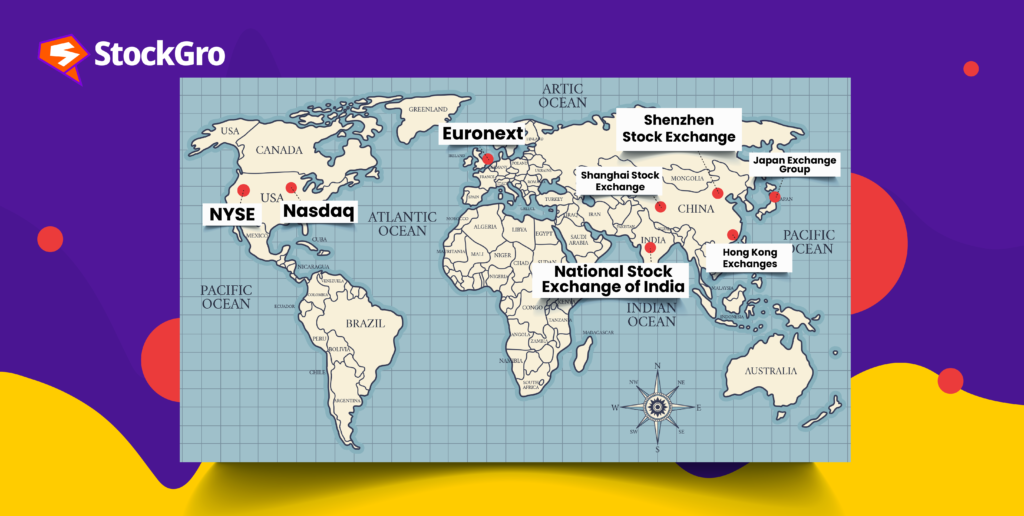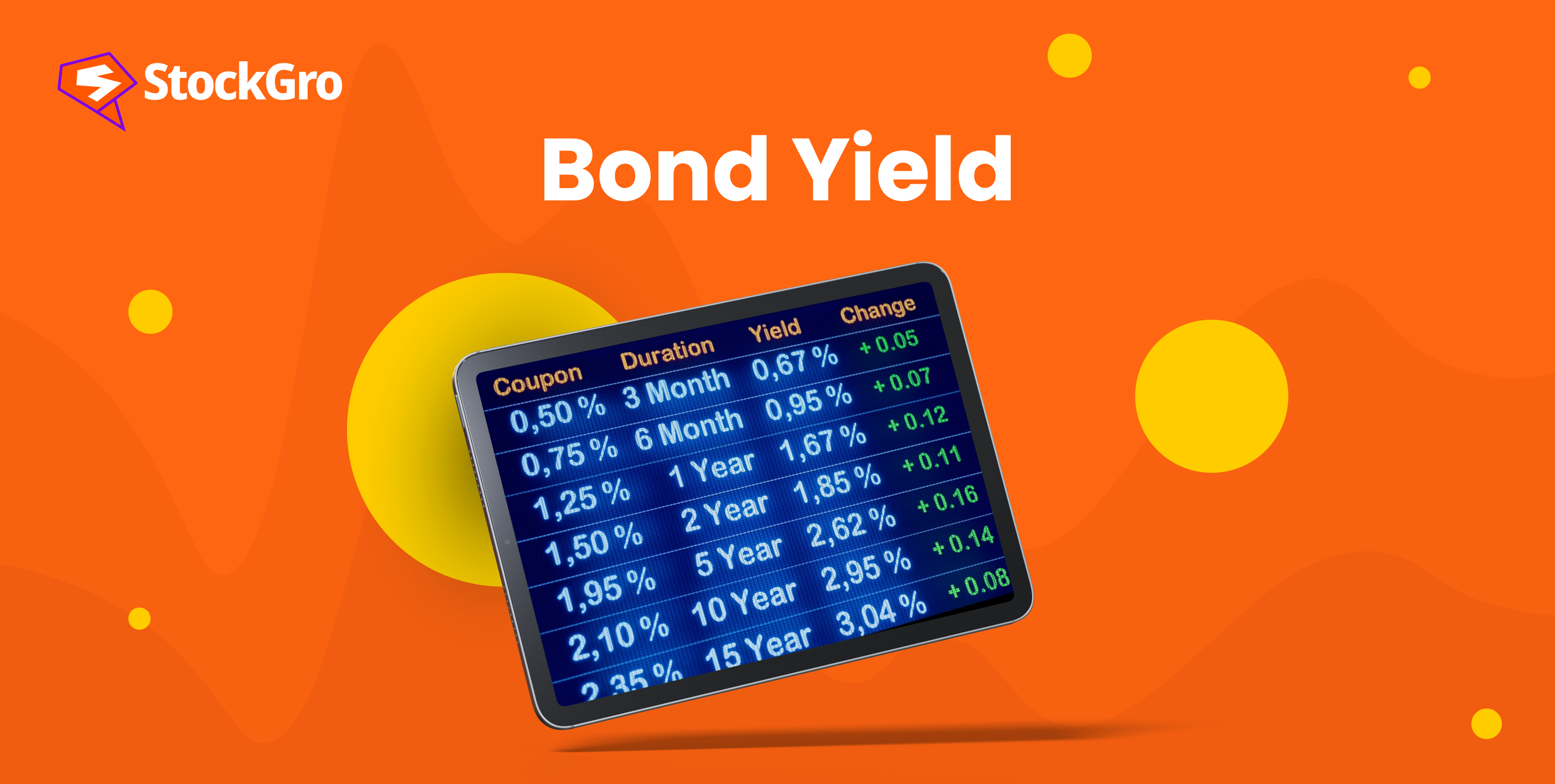
Following its 77th anniversary of independence, India has seen significant progress in its capital markets. That being said, there have also been several ups and downs along the way.
However, the Indian equity market showed a significant rise in 2023, despite a fall in other markets.
The Indian stock market value soared beyond the $4 trillion threshold and overtook the Hong Kong stock exchange’s value just before the new year.
So, what are the driving factors behind this phenomenal growth in the Indian equity market? We will find out in this article with a quick look back into the past.
Also read: A beginner’s guide to the stock market
History of the Indian stock market
In the 18th century, the East India Company began dealing in loan securities, which is when India’s stock market era began. In the 1830s, alongside the stock of banks and cotton presses, corporate shares also started trading in Bombay.
India’s first stock exchanges were established unofficially in the 1850s, when 22 stock traders set up operations under a banyan tree in front of Bombay’s Town Hall.
This informal setup was later formalised with the introduction of the Companies Act of 1850, which established a legal market for trading stocks.
After engaging in informal trading, a group of traders founded the Native Share and Stockbroker’s Association in 1875. This organisation eventually developed into the Bombay Stock Exchange.
The Bombay Stock Exchange (BSE) was founded in 1875 and is the oldest stock market in Asia. However, the Securities Contract Regulation Act of 1956 gave it permanent recognition in 1957.
In 1994, the National Stock Exchange (NSE) was established to keep up with the BSE and promote transparency in the equity market. Other than the BSE, 23 stock exchanges were established after independence.
Given that the BSE and NSE have been operating across India since the 1990s, most investors have shifted away from smaller stock exchanges and towards these exchanges.
Today, BSE is among the most prominent stock exchanges globally, based on market capitalisation, with an approximate market value of ₹301.21 billion as of December 29, 2023.
Indian stock market growth in 2023
With both the benchmark indexes, the Sensex and Nifty 50, reaching successive all-time highs, the Indian stock market is on an impressive bull run this year.
Due to the strong domestic economic expansion and expectations of global interest rate cuts in the upcoming months, investors may be more willing to take risks, driving the upward trend.
Though there are occasional spikes in volatility, the local equity market has generated substantial returns in 2023. The benchmark Nifty 50 has climbed by about 20%, while this year, the Sensex has returned more than 18%.
Additionally, the market cap of almost every company listed on the BSE as a whole has exceeded ₹366 lakh crore, indicating the market’s remarkable growth and value.
In terms of returns, December 2023 has proven to be the most profitable month for the Indian market. The Nifty 50 has had a staggering spike of more than 7% this month, making it the most significant monthly gain of the year. The month of November saw increases of more than 5.5% after this.
The recent achievement of securing the 4th largest position in terms of stock market ranking worldwide can be due to several reasons. Hong Kong’s Hang Seng has fallen 33% since March 2020, in contrast to India’s Sensex, the primary benchmark for the market, which has increased 1.5 times.
The fact that India’s market cap is currently higher than Hong Kong’s is a reflection of the country’s remarkable outperformance, which is supported by the rapid growth of the economy and the listed firms on the BSE and NSE.
The top 10 stock markets in the world
From the busy trading floors of the New York Stock Exchange to the sophisticated trading platforms of Shanghai, the world’s leading stock markets are at the heart of the global economy.
The top 10 share markets in the world by market cap (in trillion USD) as of January 2024 are:
- United States: New York Stock Exchange (NYSE)
- China: Shanghai Stock Exchange (SSE) and Shenzhen Stock Exchange (SZSE)
- Japan: Tokyo Stock Exchange (TSE)
- India: Bombay Stock Exchange (BSE) and National Stock Exchange (NSE)
- Hong Kong: Hong Kong Stock Exchange (HKEX)
- France: Euronext Paris
- UK: London Stock Exchange (LSE)
- Canada: Toronto Stock Exchange (TSX)
- Saudi Arabia: Saudi Stock Exchange (Tadawul)
- Germany: Frankfurt Stock Exchange (FWB)
Also read: The world’s top 10 stock exchanges by market cap: What you need to know
India tops global equity performance with the highest gains
The Indian market started 2023 on an unfavourable note, with the Nifty 50 declining more than 2% in each of the first two months of the year. However, over the following eight months, the market remained resilient and had strong momentum, as the Nifty 50 witnessed consistent gains throughout this time.
Among the significant achievements of 2023, the 24.8% increase in the market cap of the Indian stock market to $4.16 trillion is undoubtedly the most significant. On top of that, in January 2024, India climbed to the fourth spot in the global stock market rankings, leaving Hong Kong behind.
| Country | Growth in aggregate Market cap in 2023 (%) |
| India | 24.46 |
| US | 22.61 |
| France | 14.04 |
| Saudi Arabia | 13.91 |
| Germany | 12.52 |
| Japan | 11.79 |
| Canada | 7.03 |
| UK | 5.29 |
| China | -9.58 |
| Hong Kong | -12.61 |
For the fifth year in a row, this remarkable gain is the highest rise since 2021.
The robust macroeconomic fundamentals and capital from both local and international institutions have allowed the Indian share market to climb into the top ten global markets this year.
At $50.35 trillion in value, the US market continues to dominate. In contrast, China’s market capitalisation fell by 8.81% to $10.57 trillion as a result of a slow recovery from COVID-19, a shortage of housing, and economic challenges. In 2023, the Shanghai Composite in China dropped by 5.7%.
Hong Kong had a loss of almost 12.6%, dropping to $4.56 trillion, while Japan’s market value climbed by 11.6% to $6.09 trillion amongst other Asian markets. As of 2023, the Hang Seng is down 17.4%.
The market capitalisations of Saudi Arabia, Canada, and Germany increased by 13.1%, 6.63%, and 12.25%, respectively, resulting in $2.97 trillion, $2.89 trillion, and $2.39 trillion, respectively.
Europe had a 13.77% increase in France’s market cap to $3.27 trillion and a 5.3% increase in the UK market to $3.07 trillion.
India’s robust economic growth and performance have increased the country’s share of global market capitalisation to 3.77% in 2023 from 3.4% in the previous year.
Also read: Decoding the significance of market capitalisation
Conclusion
Thanks to the strong domestic macroeconomic situation, the sentiment towards the market has been favourable, and this win is likely to boost the market prospects significantly.
With straight record highs in key indices during a strong bull run in 2023, it is safe to say that the market picture for 2024 seems to remain bullish.

